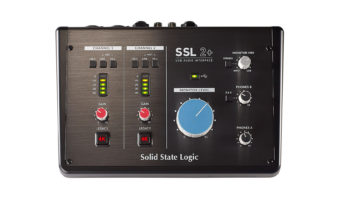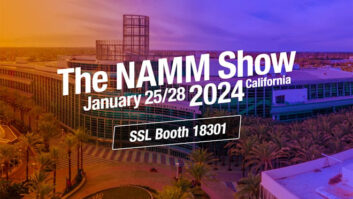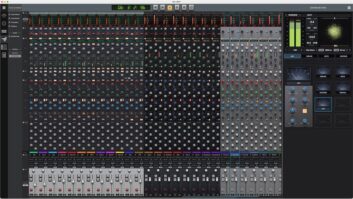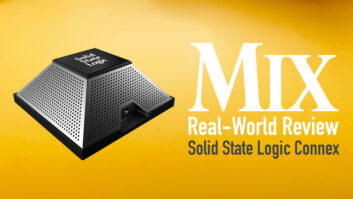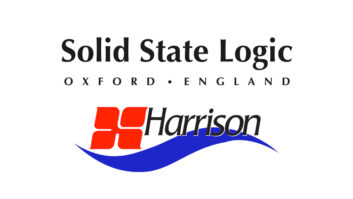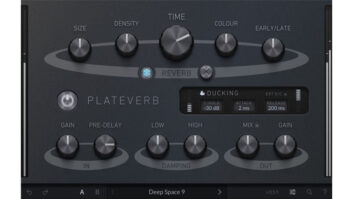
Solid State Logic has a stellar reputation as a manufacturer of some of the recording industry’s most popular large-format mixing consoles, but in recent years, the company has offered products targeted toward personal studios. With its first few releases in this regard, SSL seemed to struggle to find a way to offer an SSL analog signal path with DAW-centric controls while keeping the price tag appropriate to the target market. With the Nucleus, SSL has nearly perfected the recipe for the ultimate cocktail of those ingredients. Trimming out the excess and boiling functionality down to the essentials has left the best of all results: an affordable moving-fader control surface with a pair of high-quality mic preamps and a great-sounding analog monitor section.
DESKTOP DYNAMO
The Nucleus stands tall among control surfaces, offering 16 100mm touch-sensitive motorized faders. The glide of the faders feels comfortably smooth while providing enough resistance for making accurate stops. Automation written with faders was respectably smooth. Even with multiple faders writing simultaneously, the Nucleus was able to accurately convey my fader moves. Five hearty, illuminated buttons provide professional-feeling transport controls while the jog wheel offers control of zooming, scrubbing and more.
On each channel, you’ll find dedicated Solo, Cut and Select buttons, which respond quickly and illuminate when active. I tested the Nucleus along with Pro Tools and Logic, and found that the corresponding track names are displayed on one of the two rows of a brightly lit scribble strip. Both rows of the scribble strip are repurposed when it is necessary to display other operational information.
Each channel also has an endless rotary encoder/button (which SSL refers to as “V-Select” buttons and “V-Pots”) that allows you to determine operability in a number of ways. Dedicated function keys across the unit’s top-left apply default settings specific to the control protocol being employed. For example, with Pro Tools I could quickly toggle the V-Pots to control send values for sends A through E, or pan controls. Those controls would then map to all 16 of the rotary encoders across the Nucleus. Alternative layers of functionality for the V-Pots and V-Selects are accessible through Mode buttons in the center of the desk.
DAW DIFFERENCES
When operating Nucleus, specifically with Pro Tools 9 and Logic Pro 9, the experience couldn’t be more different. In short, Pro Tools operation through HUI is clunky, while operating Logic through the Mackie Control unit protocol is much improved.
With Pro Tools, the controls for some plug-ins were problematic, if not downright spotty. For instance, I was unable to access the controls for Drumagog at all, and adjusting the amplifier settings on a Line 6 Pod Farm crashed Pro Tools repeatedly, but only when controlling the plug-in from the Nucleus. Adjusting the frequency of the first band of a Waves REQ from its default value of 30 Hz up to 250 Hz required five complete rotations of the rotary encoder. Panning with the V-Pots from hard-left to hard-right required approximately 540 degrees of rotation, so writing this pan smoothly in real time required the use of two hands.
All of these problems disappeared with Logic. The resolution of the V-Pot was much more usable, I had access to all plug-ins and there were no crashes. Generally speaking, in Logic the controls were more responsive, so dialing through a list of plug-ins was faster and more practical than in Pro Tools. Panners similarly improved by providing a more reasonable resolution. Instead of paging through settings with a rotary encoder, dedicated arrow buttons in the center section came into play. The Left and Right buttons flipped through pages of parameters, while the Up and Down buttons let you choose between different insert positions. Best of all, you can flip anything from plug-ins to sends from the rotary encoders to the faders, which is not the case with Pro Tools.
I was very impressed by the way that once each DAW was configured with Nucleus, switching between them was a snap. I had Pro Tools and Logic running simultaneously for the purpose of comparison. With one button, I could toggle from one DAW to the other. This functionality could be incredibly convenient for using a ReWire app with a primary DAW.

The rear of the Nucleus offers analog and digital connections, an SD card slot, footswitch port and more.
ADDITIONAL CONTROLS
I was also impressed with the additional layers of functionality that were offered through SSL’s Nucleus Remote software. It seems that this “SSL Logictivity” software is common throughout the company’s control surface family. Using Nucleus Remote, you can remap the default functions of any physical button to a new DAW function. Eight extra buttons are also provided specifically for custom mapping that you want to do. Nucleus speaks to the DAW through a high-speed Ethernet connection for typical control surface functionality, as well as through USB as a virtual keyboard, so any button may also transmit a message that is equivalent to any combination of keystrokes. Thus, any task that can be performed with a keyboard shortcut can also be made to happen at the touch of a button on the Nucleus controller. For example, opening and closing windows, engaging and disabling automation parameters and managing groups were all accessible through buttons using the included default layouts, or by assigning buttons. Altogether, three different layers of functions could be assigned to each button using this software protocol. Setups can also be saved and brought into another Nucleus by storing them to an SD card.
Conversely, the Nucleus USB Control Panel software for controlling the monitoring hardware, which controls zero-latency monitoring before the DAW, was a step down from the Nucleus Remote software. In USB Control Panel, the controllers were confusingly named and lacked the rich graphic design of the Remote software. Overall, this section could use a redesign.
IMPRESSIVE ANALOG PERFORMER
For the analog section of the desk, SSL kept it simple, providing two great-sounding preamps and high-quality analog monitoring outputs, as well as clean, transparent AD/DA conversion. Nucleus offers a tasteful complement of connections that accommodate a variety of workflows. Each preamp has an insert point and direct output so you can use the console’s analog section with a different interface. Also, different types of aux inputs are provided to connect additional devices to the onboard monitor section. A pair of headphone outputs are inconveniently located on the rear, with an input/output blend control for zero-latency input monitoring in the monitor section. S/PDIF inputs and outputs are provided through optical connections.
By avoiding the usual pitfalls of including countless preamps, a summing mixer and analog EQs for a high price tag, Nucleus instead provides a quality USB interface at a reasonable price. The SSL SuperAnalogue™ mic pre’s use the same circuit employed by the SSL Duality console. The product literature describes these preamps as “transparent,” but in testing them against other less-colorful pre’s, I found this assessment to be a bit of an undersell, which was disappointing. I was pleased to find that they have a character that is more consistent with other SSL front ends that I’ve used: A pronounced bottom end provided warmth without sacrificing clarity, with an honest, balanced midrange and sweet highs whose detail was laced with a little extra sparkle as the preamp enriched their harmonic content. If you could have only one set of pre’s around with which to build your project studio, you’d be hard-pressed to find a stronger contender. The monitoring outputs were similarly pleasant—plenty of gain was offered without any considerable noise through either the main control room out or the headphone amps.
IS IT YOUR EVERYTHING?
The overall installation and configuration of Nucleus was a breeze. However, in using Nucleus with my MacBook Pro, I was unable to use the controller connected to my Ethernet port while simultaneously getting Internet access through the Mac’s AirPort utility. Aside from that, when connecting my MacBook to an Ethernet network using DHCP and then reconnecting to Nucleus with its default settings, the Pro Tools software found Nucleus and mapped its controls quickly. Other control surfaces would require power cycling, restarting the computer or otherwise.
All things considered—including overall performance, features and price—I see Nucleus as an essential buy. I did experience some buggy operation with Pro Tools, but any control surface that attempts to be universal across multiple DAWs is going to give you tradeoffs. Yes, Avid’s control surfaces control Pro Tools very well, but I would take these SSL pre’s over the C|24’s preamps any day. And if you only need two of them, you’re set. As far as ergonomics, the in-line mentality of Nucleus’ channel strips is favorable. The transport and general layout of the center section is spot-on, and the build quality is sturdy and professional.
I’m interested to see SSL’s next step in this direction. This is clearly a sign that the company understands what smaller studios need and want, with an execution that hits closer to the mark than any of its previous efforts.
Brandon Hickey as a freelance engineer and audio educator.

Click on the Product Summary box above to view the Nucleus product page.


